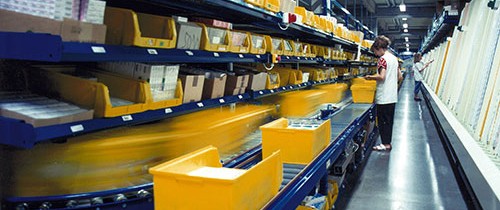Guest Commentary – Distribution Operations: Market Leader or Laggard? Will your enterprise flourish or wither under ever-increasing fulfillment speed demands?
by Charlie Rizzo
Note: This is the first of a three-part blog regarding competitive leadership in distribution center (DC) “order drop to out the door” cycle time performance. This first installment discusses the threats and opportunities of rapidly changing technologies and heightened customer expectations. The following blog(s) will examine specific DC obstacles and constraints that need to be addressed, including all team members who are required to enable you to move forward.
Will your enterprise flourish or wither under ever-increasing fulfillment speed demands?
The pace and expanse of information technology, its capabilities and its applications, continue to transform every aspect of our personal and professional lives, seemingly at the speed of light. Today’s state-of-the-art is tomorrow’s obsolete. As business managers, we must be fully cognizant of the phenomenon and the inevitable consequence it has on our customers’ service level expectations. We need to be sharply focused now on the quality of our current service levels and where they need to be – not years out, but within the next six to twelve months. Equally important, we need to be aware of the competition’s response and the strategies/solutions they employ; the enemy never sleeps. What is the next bombshell announcement: two-hour delivery by Walmart or Amazon?
Concurrently, we must look inward to realistically assess the technology, methods and procedures we employ in our customer service and DC operations. In many cases, what we are doing effectively today may be inadequate in the near future, much less in the longer term. Rising customer expectations and the competition are continually raising the service level bar. If you intend to thrive in the future, you must be a leader now.
Yes, the business imperative remains cost-effective fulfillment while shipping more orders in less time. Are these mutually exclusive goals? Not if your internal “team” acts as a cohesive force and takes the necessary steps to thrive within and even dominate your market niche.
This scenario presents a perfect opportunity for DC floor and supervising personnel, customer service staff and, just as importantly, financial managers to join forces and strategize about the proactive steps they can take as a team to identify long-range solutions. If you are not doing this now but merely reacting to customer expectations and competitive threats, you will constantly play “catch-up” and ever be in danger of becoming or being perceived as a laggard. Leadership in all phases of the product delivery is essential to building brand loyalty. Your immediate objective should be to leapfrog your competitor’s next move – not just maintain your competitive edge, but to increase it.
Practically speaking, maximizing the efficiency and speed to process every last order that is scheduled for each day within the DC has a true multiplier effect:
–Those last few “just made it prior to carrier pick-up” orders you get out daily will add considerably to your sales over a longer time frame through enhanced customer goodwill by continually meeting or even exceeding expectations.
–Delayed or missed shipments result in email or phone call queries/responses, which invariably add to administrative costs and burden. This, in turn, contributes to profit margin erosion from “a thousand cuts.”
–The faster an order moves through the DC, the less likely overtime will be needed to make that last critical shipment.
–It is only human nature that your workforce will become discontented with excessive unscheduled work or forced overtime. They may like the extra income, but they need it to be planned so as not to disrupt their own tightly scheduled everyday lives. From a business perspective, it should be minimized to stimulate long-term retention of your most dependable associates.
Simply stated, every business entity that physically distributes a product must continuously change to anticipate customer expectations and out-position the competition. It is of critical importance that a diverse group of associates within your organization work in a unified and coordinated manner to achieve this common objective. In next week’s part-two blog, we’ll present the proactive measures you must take now to thrive in your marketplace while putting distance between you and the competition.
Charlie Rizzo is Program Director, Strategic Accounts with MHI Member FORTE





